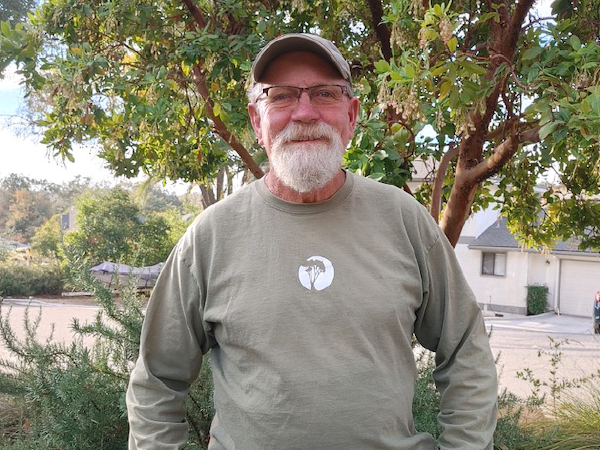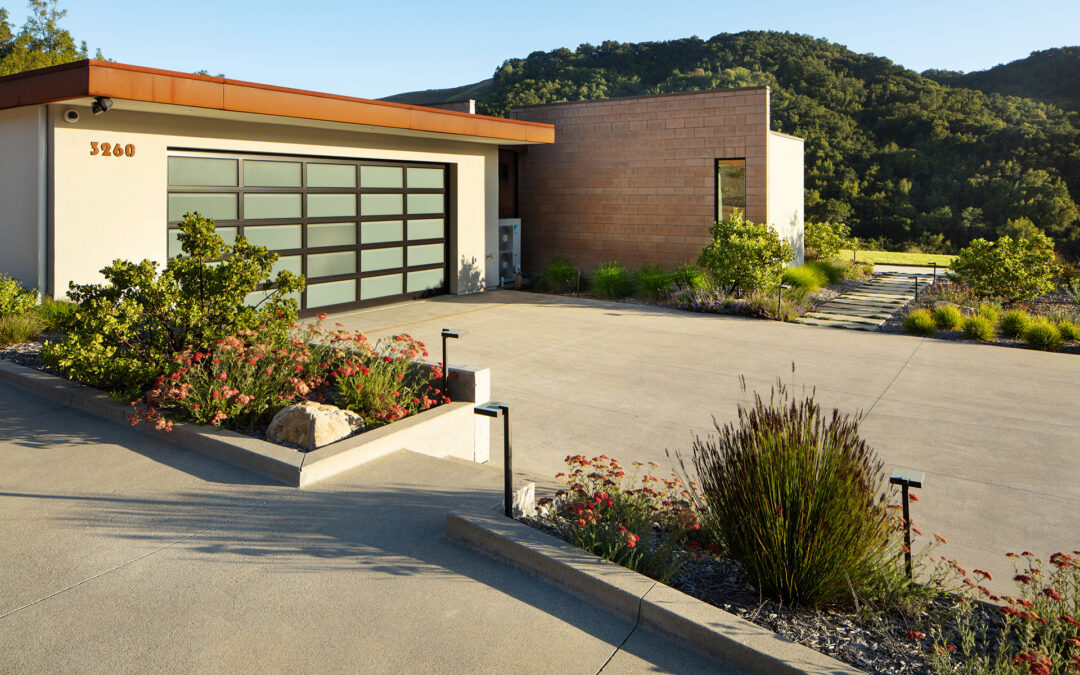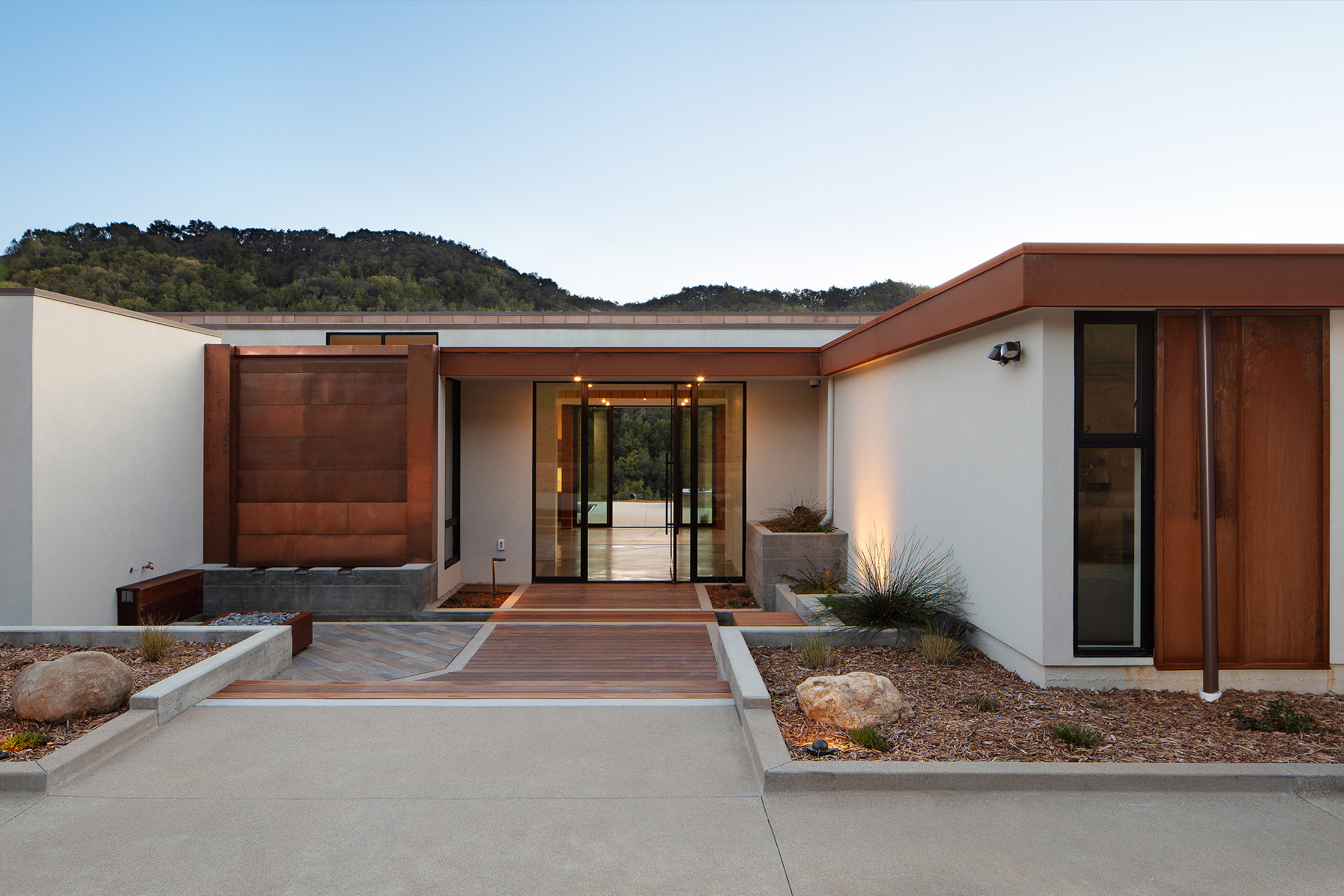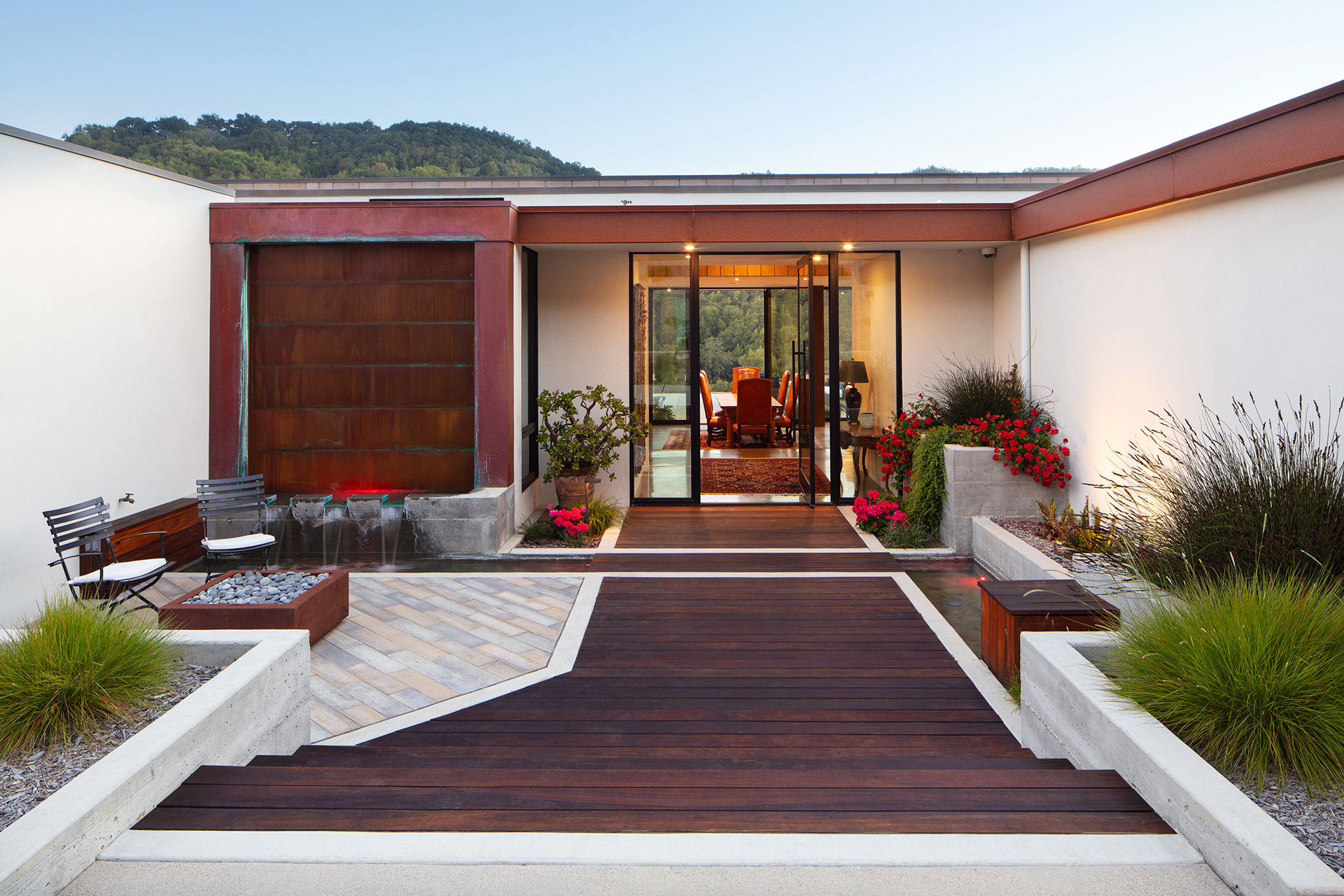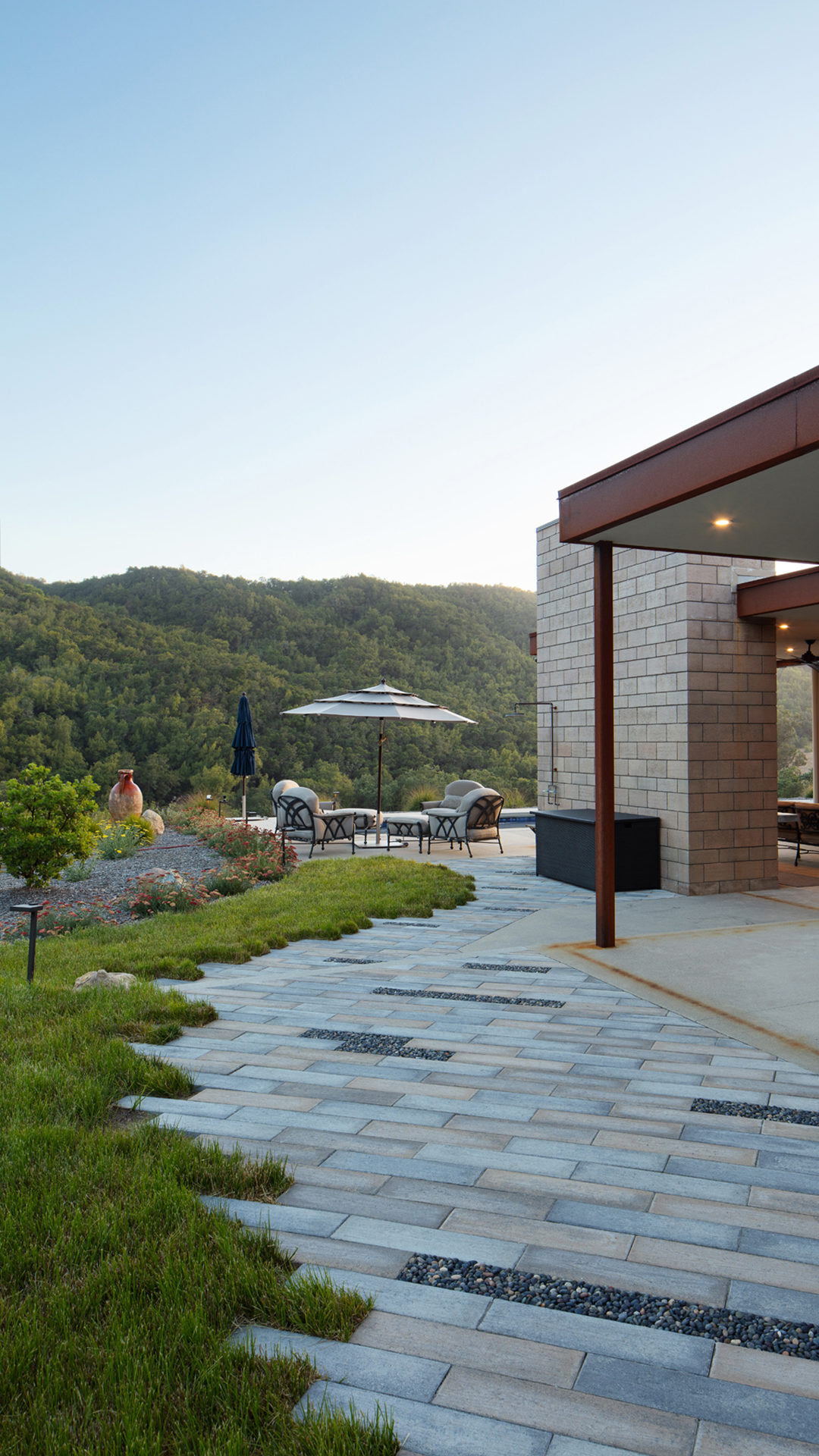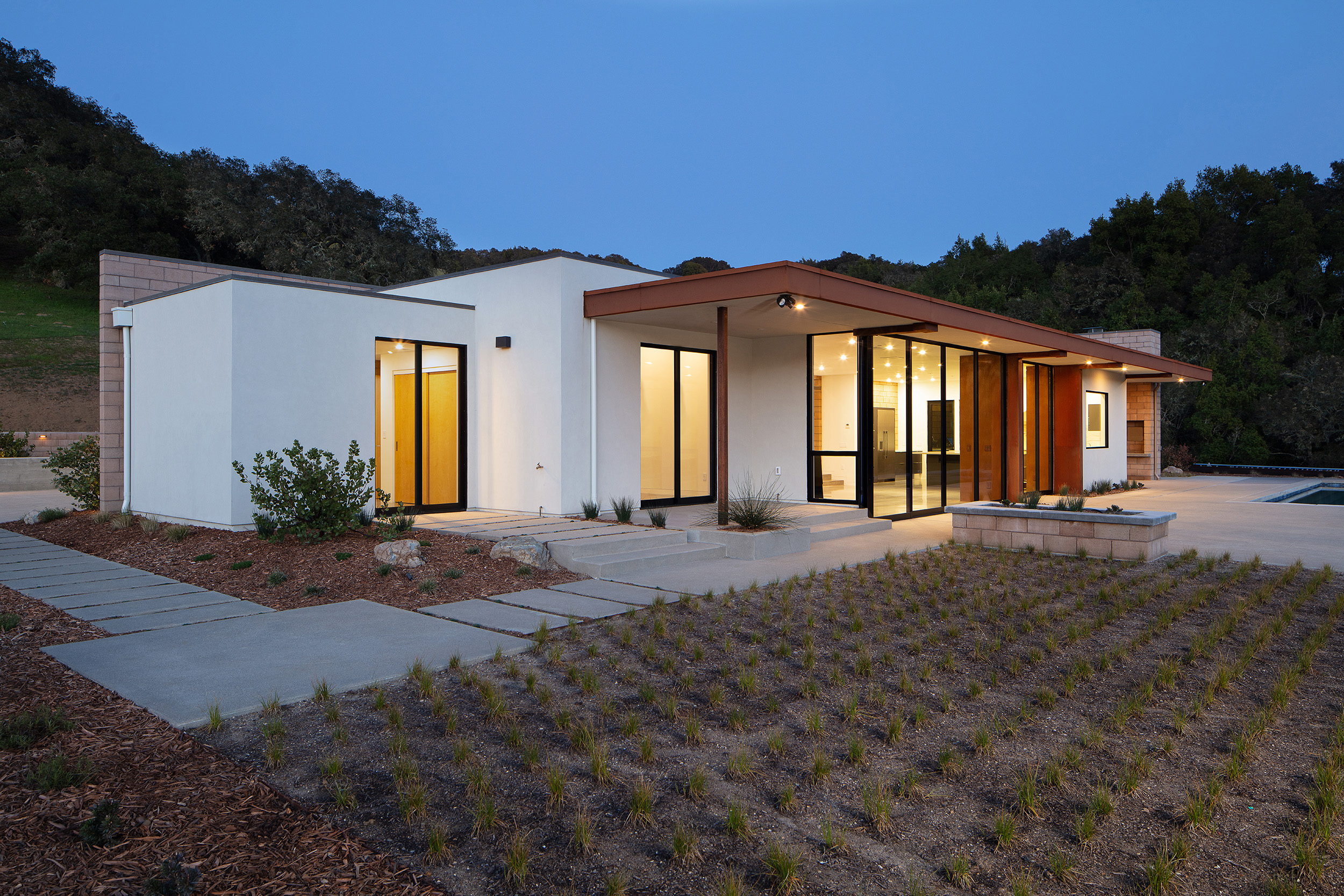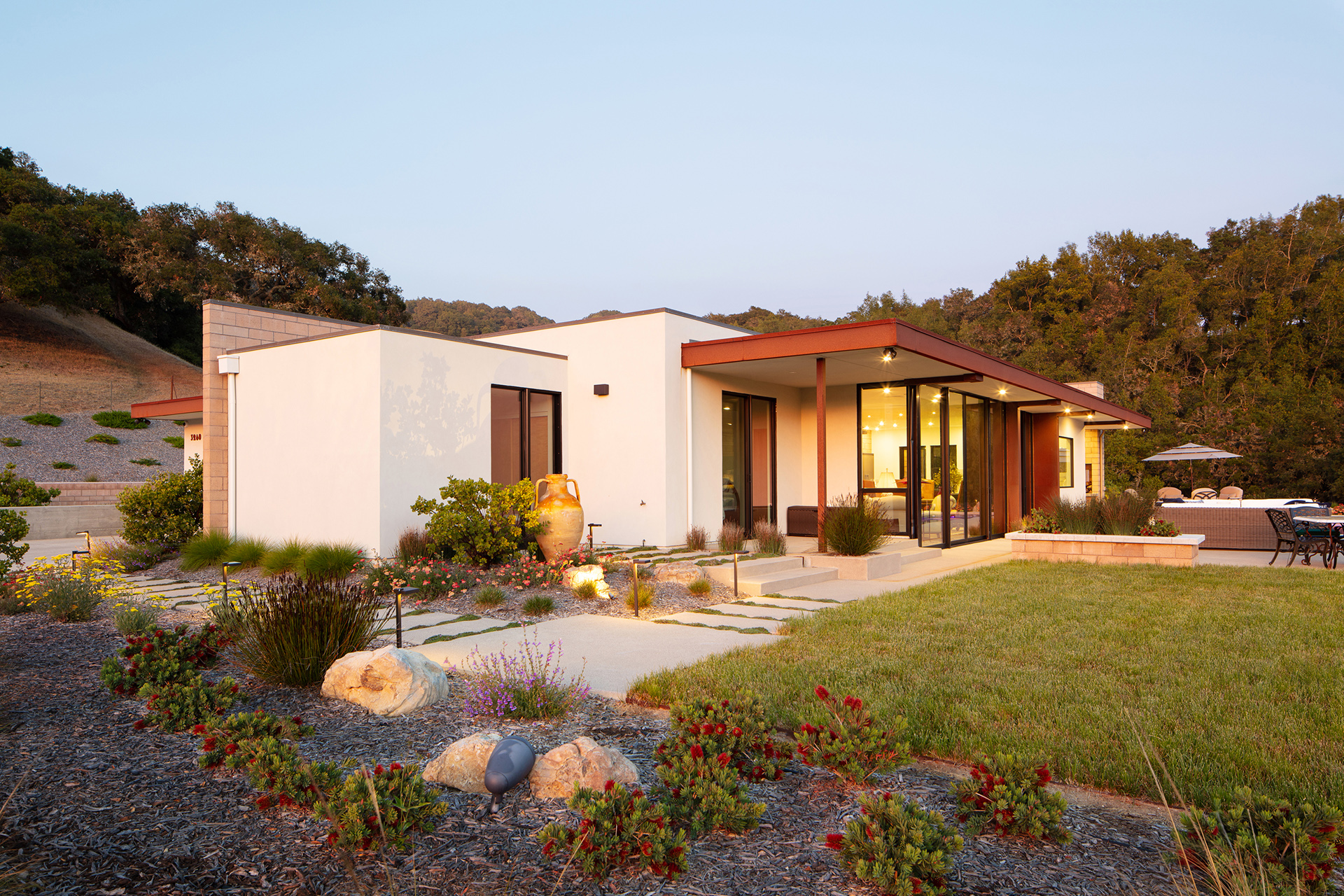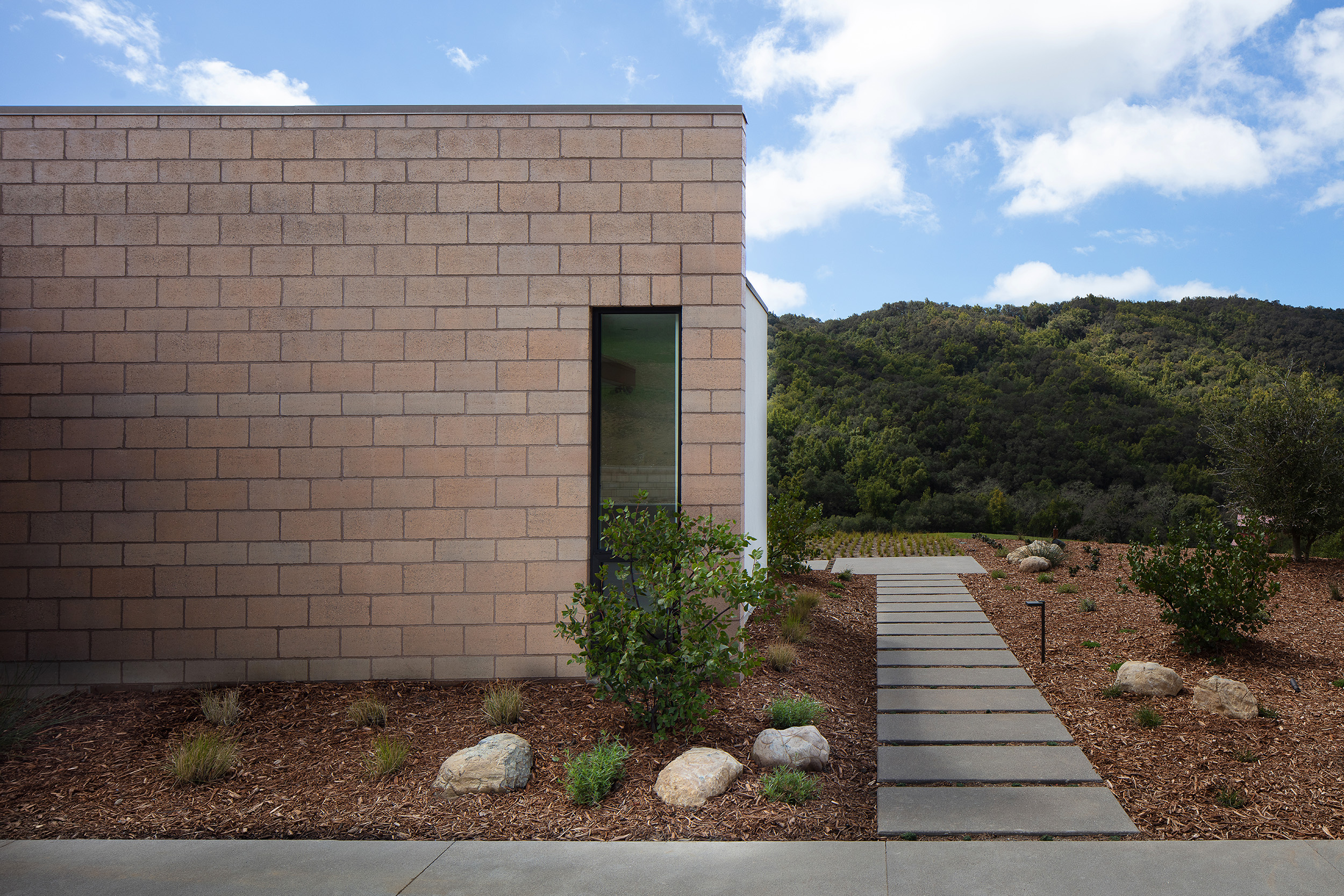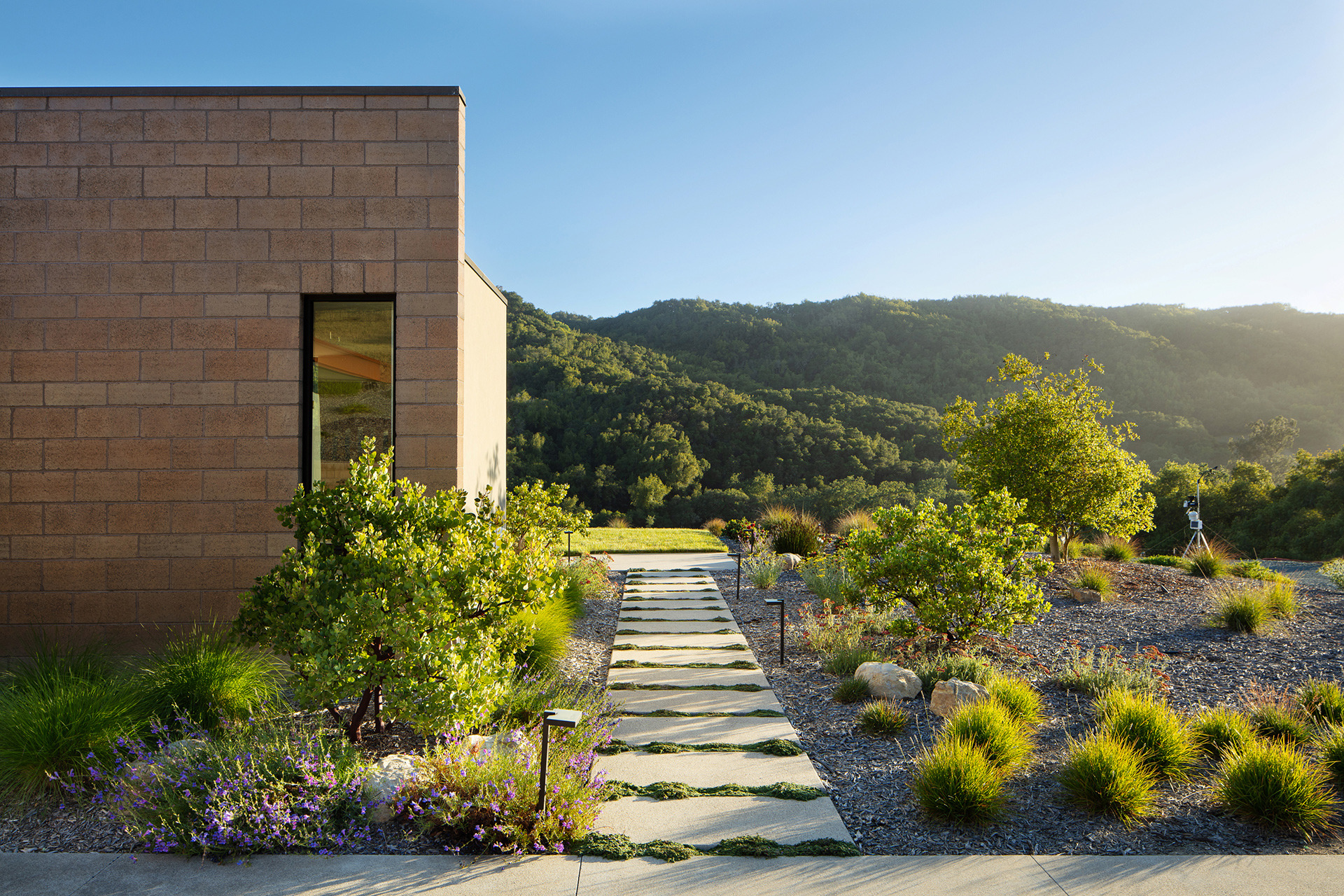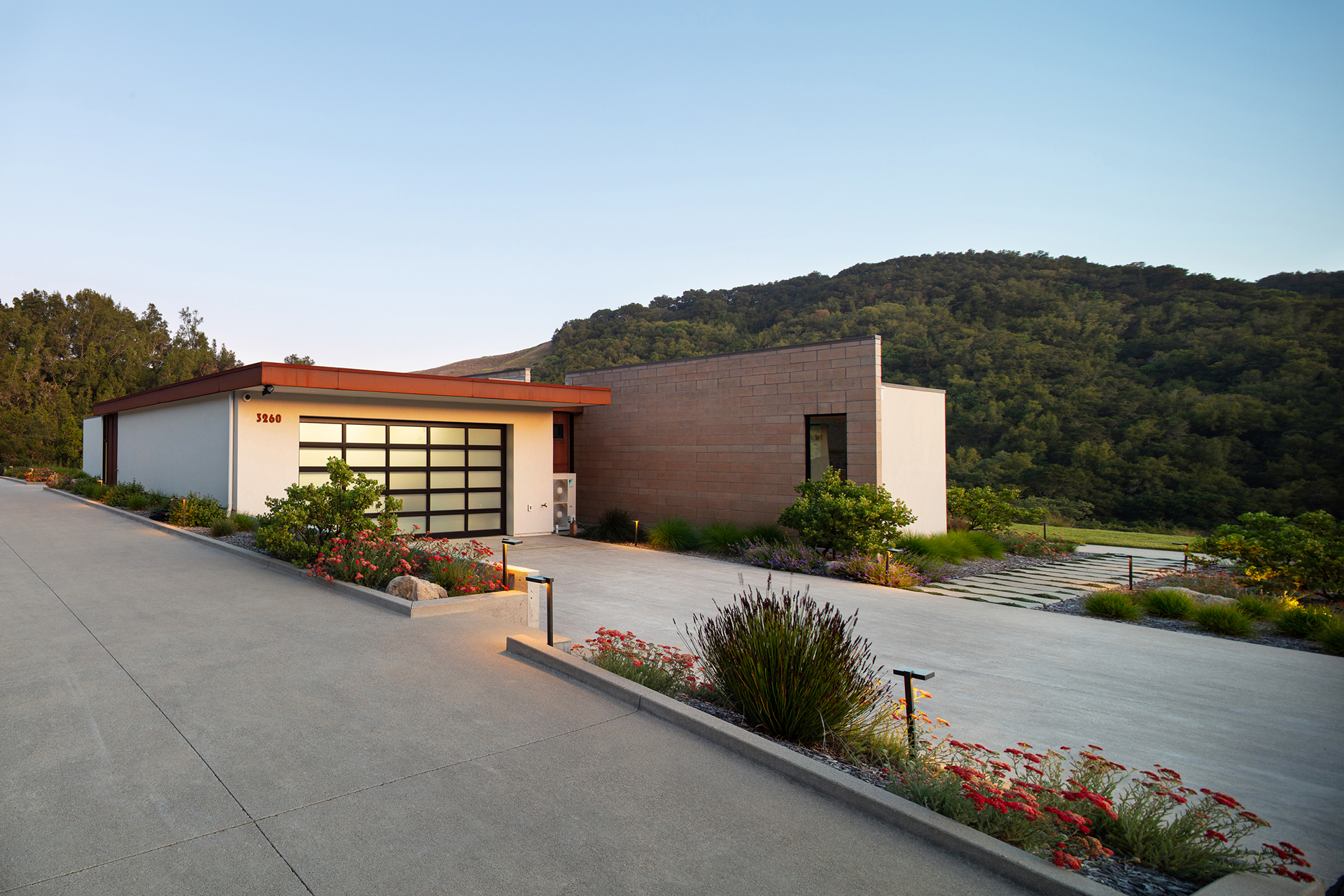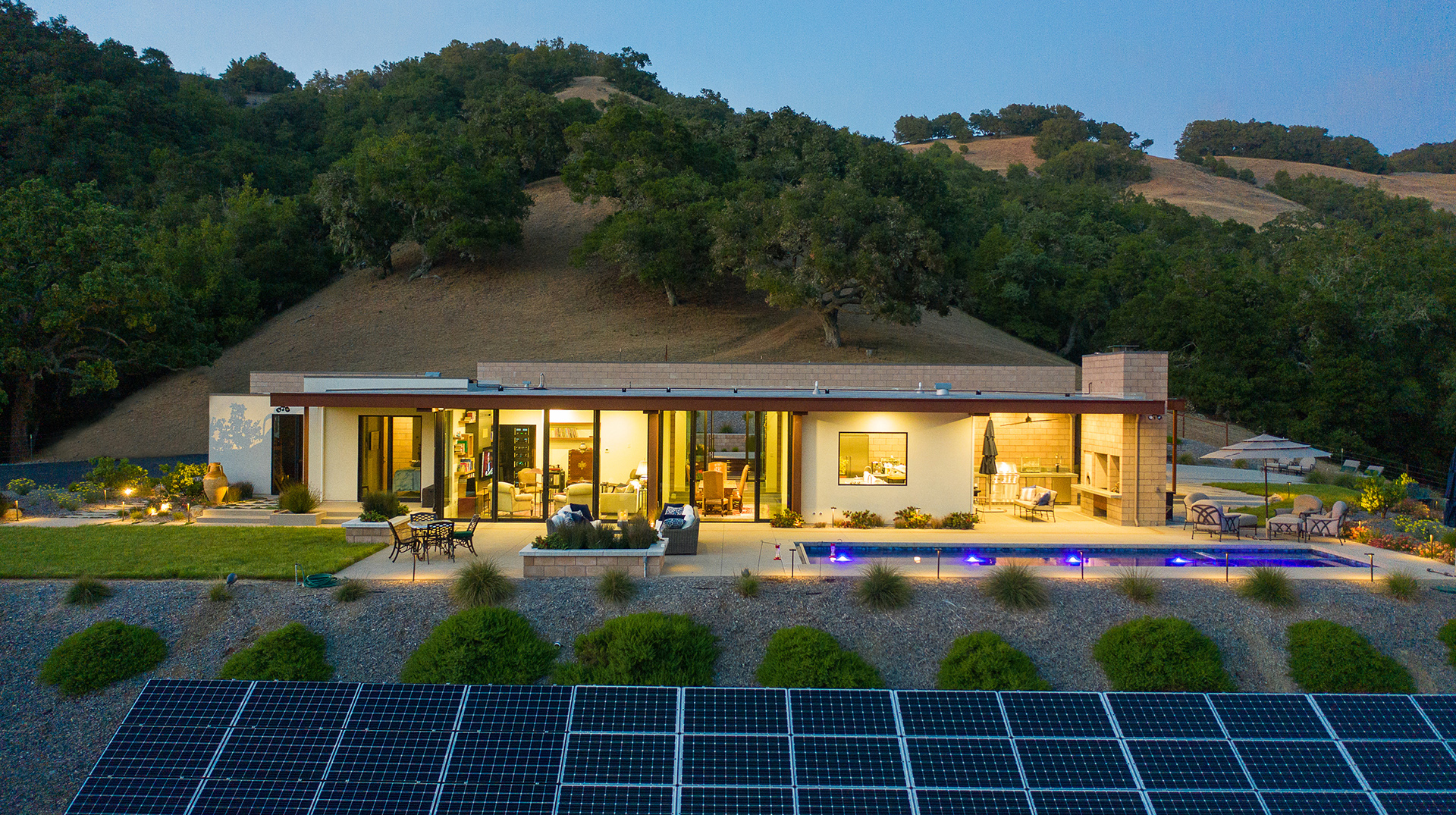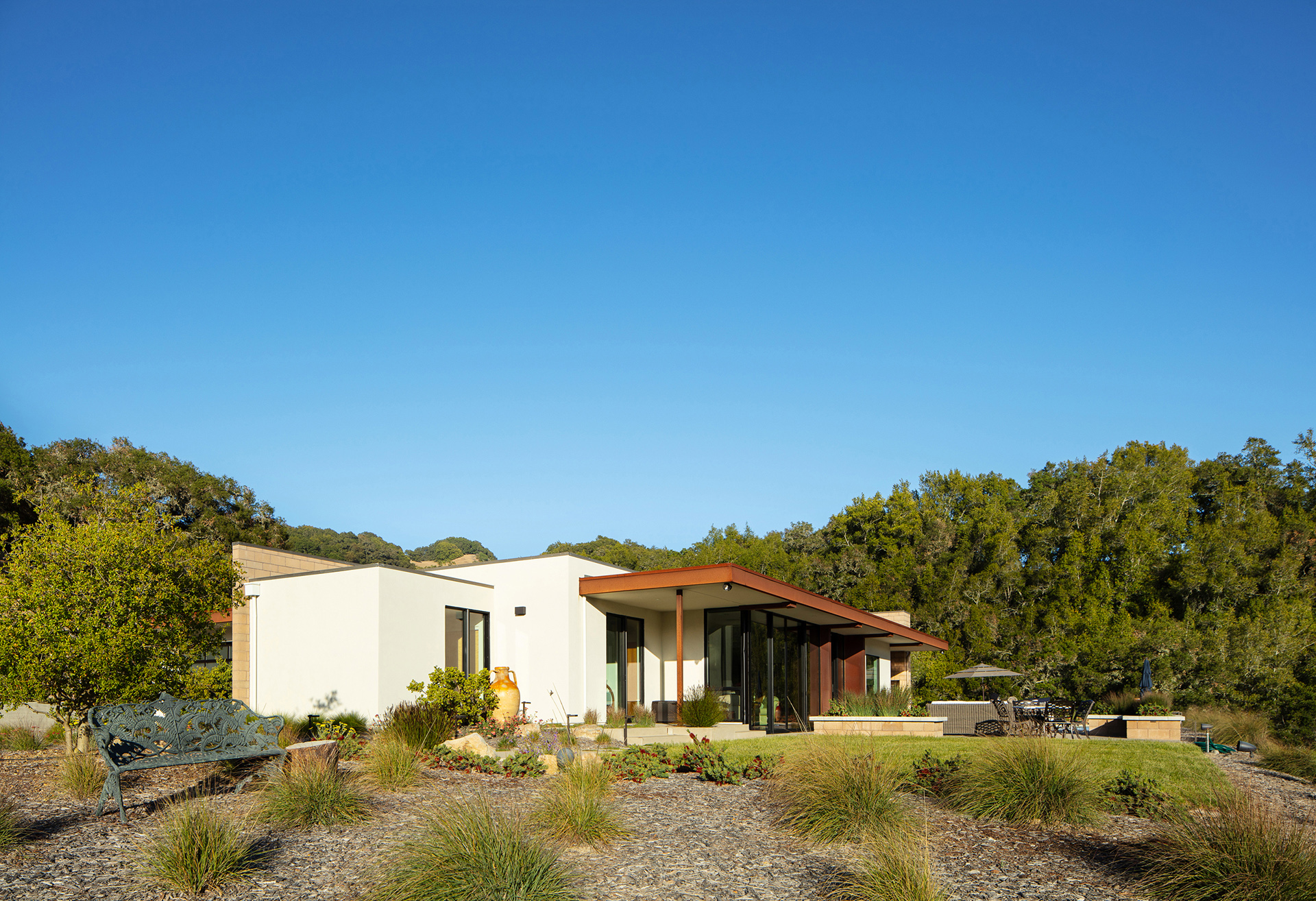
Aug 31, 2021
This lush residential garden, located in Grover Beach, incorporates many curves and circles by using massive earthwork and retaining walls. Built on a complex and challenging sand slope, the landscape maximizes every square foot with artistic and intriguing aesthetics. Edible food forests, colorful Mediterranean displays, dry creek beds, and even a golf green bring this design into vibrancy, with new irrigation and a high-volume drainage system to keep the entire property functioning well. Three labyrinth designs are incorporated into the pathways; meandering paths to different areas provide a feeling of exploration and discovery. After extensive work and focused creativity, this inspiring space qualifies as a proper oasis.

Aug 30, 2021
Madrone extends a warm welcome to Tyler Ellison, who recently joined our landscape design team. With his functional and pragmatic approach, he fits right in! He is detailed yet practical in his designs, ensuring his fresh ideas are both buildable and unique. He loves meeting new friends, listening to their needs and experiences, and working alongside them to create a space they can enjoy and call their own. We look forward to tasting his homemade mac & cheese!
How did you end up at Madrone?
After finishing both the Landscape Architecture and MBA programs at Cal Poly SLO, I was looking to join a Central Coast landscape design company. I worked for around two years for a landscape architecture firm in San Luis Obispo. I have always been a designer and “maker” – so I jumped at the opportunity to work for a design/build company.
What is your favorite thing about working at Madrone?
My favorite thing about working for Madrone is people—both in and out of the office—and the diversity of opportunities it brings me as a young designer.
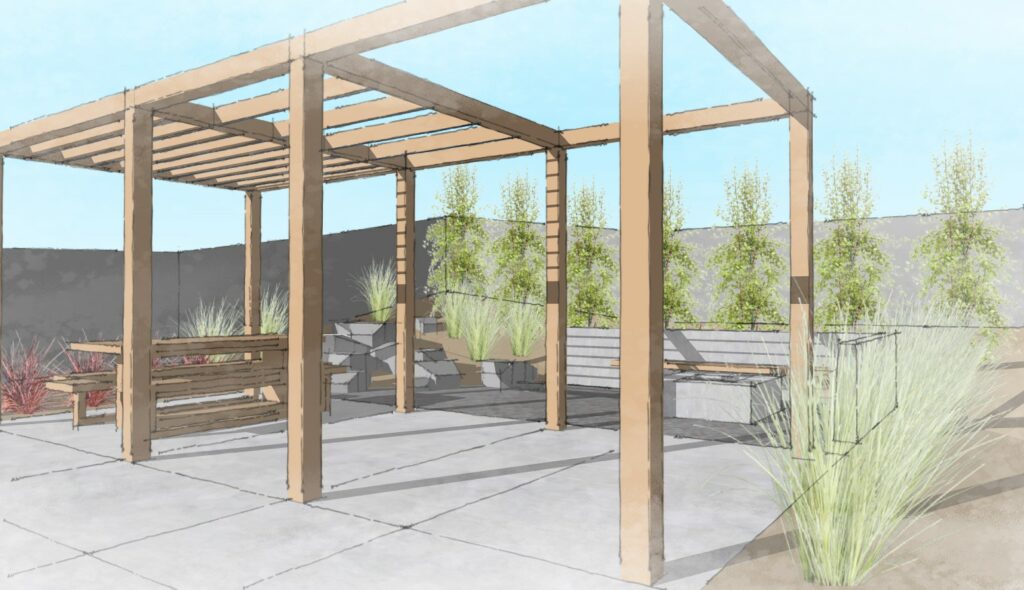
Sometimes I use Sketchup to help visualize design features and the feel of a space.
What do you enjoy most about your team/department?
I enjoy the unique strengths of each individual, and the various perspectives they lend to design and installation. Their feedback and crititique is a welcome challenge and completely necessary for any young creative.
What do you enjoy most about being a landscape designer?
I enjoy meeting new people and hearing their dreams for a space, and collaborating with them to design a space that is functional, unique, and beautiful.

I enjoy the sketching process starting out any new design.
I love the bold statement of a gold Bougainvillea, but also the softness of a variegated thyme along a path. I would consider Platinum Beauty Lomandra to be my favorite and most versatile landscape planting element. I unambiguously dislike Bradford Pear trees—massively overplanted, messy, susceptible to disease, and structurally weak, to name a few characteristics.
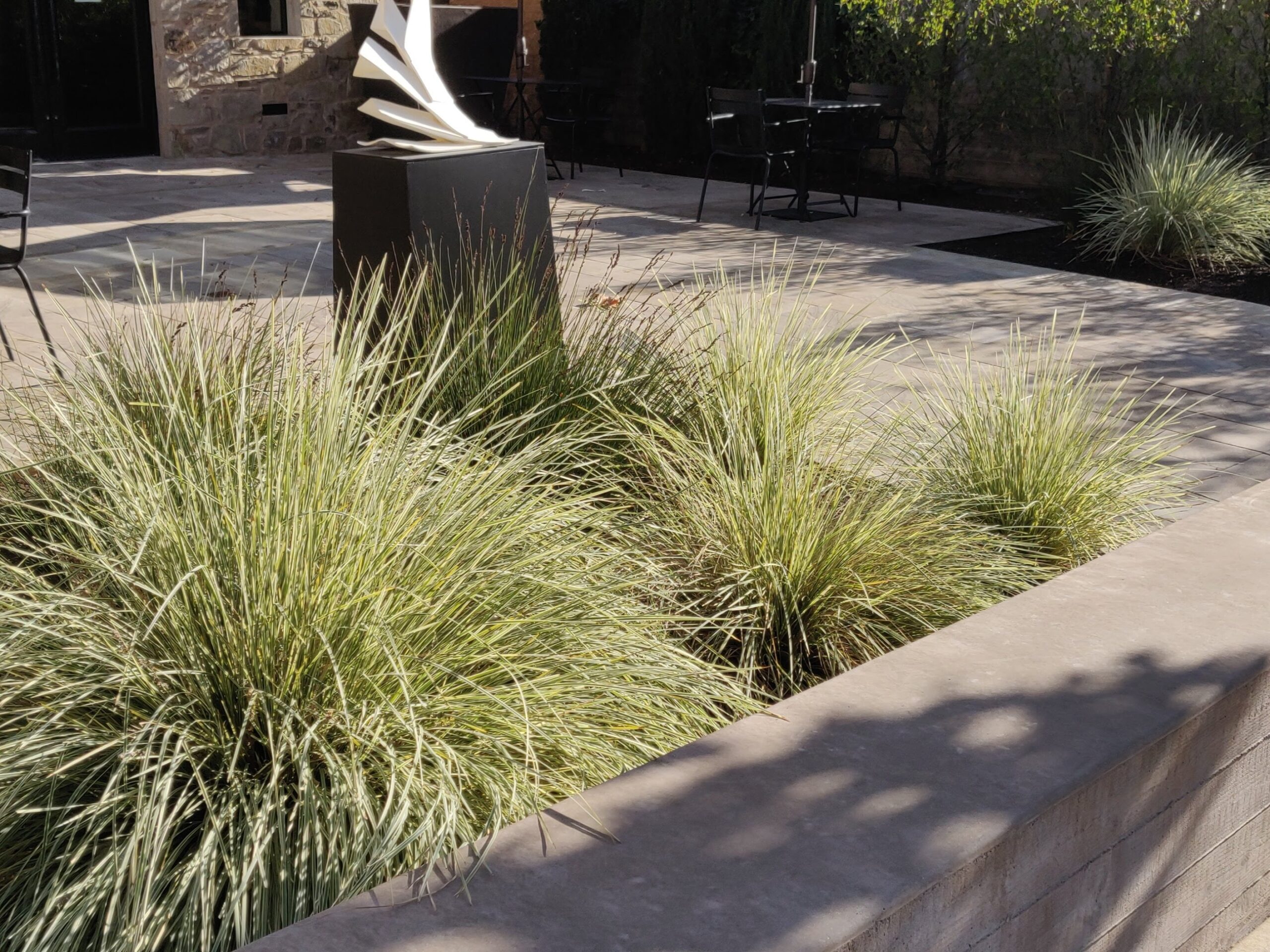
Photo of Platinum Beauty Lomandra from a favorite breakfast spot in Yountville, California.
What are some of your favorite hobbies outside of work?
Since my first art show in early 2020, I have continued to paint and sell art through an online portfolio, ellisondesigns.com. I love people, plants of all types, exploring new places, live jazz, brewing craft ginger beer, and developing a line of custom reclaimed wood furniture.
Give us a fun fact about you!
If landscape design doesn’t work out, you will find me opening a food truck that serves made-to-order macaroni and cheese and a variety of crunchy and savory toppings.
Ready for a landscape design and want to talk to a professional? Contact our landscape designers at [email protected] or (805) 466-6263.

Jul 14, 2021
Achieve the Landscape of Your Dreams Post-Pandemic
2020 saw an upsurge in outdoor redesigns—from businesses to backyards. Outdoor living investments topped the list of spending as everyone reconsidered the value of open-air seating or, for homeowners, a sanctuary.
Due to shutdowns, however, disruptions in supply chains were common and became major 2020 obstacles. Consumer demand then outpaced supply and drove up costs as products took longer and longer to arrive.
The lumber and resin supply chains took a particularly harsh hit. Lumber shortages resulted from dealers cutting back in light of falling demands at the start of the pandemic. Resin shortages were driven by “many resin manufacturers and distributors declaring force majeure on [many resin products]” in light of major storm fronts hitting Texas and the Gulf Coast. With resin being used for plastics, even PVC and sprinkler parts rose in price. A decrease in workers across the board also stunted supply chain flow, as there are fewer truck drivers able to deliver.
As the country opens back up, supply chains are patching, but the builder industry still cannot expect the speed and supply of pre-2020 years. Roger Ramsey from Ewing Irrigation emphasized that “we will not have the luxury of a full supply chain to lean on”—we are still in recovery, and it will take time to return to snap back.
According to Evan Moffitt, CLT, CLIA, PCA, from SiteOne Landscape Supply, however, “this pricing is likely to stick. Pricing structures will change. It appears that there is no end in sight in terms of the shortage” (emphasis added). Because of this, it is essential to expect your landscape to not only potentially take longer but to cost more.
That being said, there are ways to be strategic while still achieving the landscape you want. Here are four tips for property owners to stay on top of limited resources:
Be Flexible
Do not marry yourself to a single ideal, and make sure to have a backup plan. Availability is still limited, and you should plan for the event that your specific materials might not be the best option. Says Ramsey, “Make sure you have an alternate in mind for each part of your project.” Be open to discussion with your designers on whichever aspects might see trouble.
Communicate
Early and proactive communication of your needs will make for a much smoother schedule. Try to be clear about what you need to be done and when, and the business tackling your project will adjust as they are able. Ask for realistic timelines so that you know what you can expect. Be communicative with your vision, needs, and options so you can be accommodated quickly and without fuss.
Be Ready to Switch Gears
Supply chain disruptions are usually sudden and unplanned, which means that your project might not be finished in the expected timeline. If supply shortages make one section of your landscape lag, once again be flexible—encourage the pursuit of other areas of the project site and be proactive with any adjustments you’re ready to accommodate.
Prepare for Price Adjustments
If you’re on a tight budget, begin with a forgiving vision so that you can adjust as needed to any price jumps or extra costs. “Expect delays,” says Moffitt. “Things will take longer to get. Materials will cost more.” Once again, communicate thoroughly with your landscapers so they know what you can and cannot afford. They will adjust within your margins to make sure that any potential hurdles won’t hurt you financially.
Post-pandemic, property owners continue to invest in outdoor spaces, which means not only are materials in high demand, but so is labor. If you are in the midst of a landscape project or planning to start one, these four strategies will guide you cleanly through the process. Please contact us if you have any questions about your project.
“Stay Ahead of Outdoor Living Supply Chain Disruptions,” SLOXpress, CLCA SLO Chapter, April 2021, page 4.

Jun 10, 2021
With five acres of beautiful blank canvas, this private residential landscape presents an expansive front yard and a nestled tier design, providing a balance to the home’s modern architecture and the surrounding Atascadero hills.
Focusing on the acre immediately surrounding the home, Madrone created a grand main entrance and separate outdoor “rooms” with a cohesive rustic modern style. A main path leads to a wide staircase and covered patio, providing a majestic entry experience with magnificent views. Separate hot tub and fire pit areas rest below the main level, providing spaces for relaxing during the warm North County evenings. Around the back of the house, a private courtyard provides a more sheltered gathering space with outdoor kitchen, deck, and water feature, perfect for entertaining or simply enjoying a cup of coffee on a chilly Atascadero morning.
The plant palette, featuring Palo Verde trees and Agave, relies on textures and form to reveal the variety among the greens, yellows, blue-greens and whites. Modern elements such as straight lines, evenly spaced plants, concrete, and corten steel blend with natural materials such as gravel paths, boulders, and masses of flowing grasses to make each space separate and unique while still bringing everything together as a whole.
